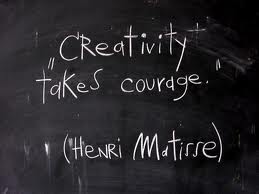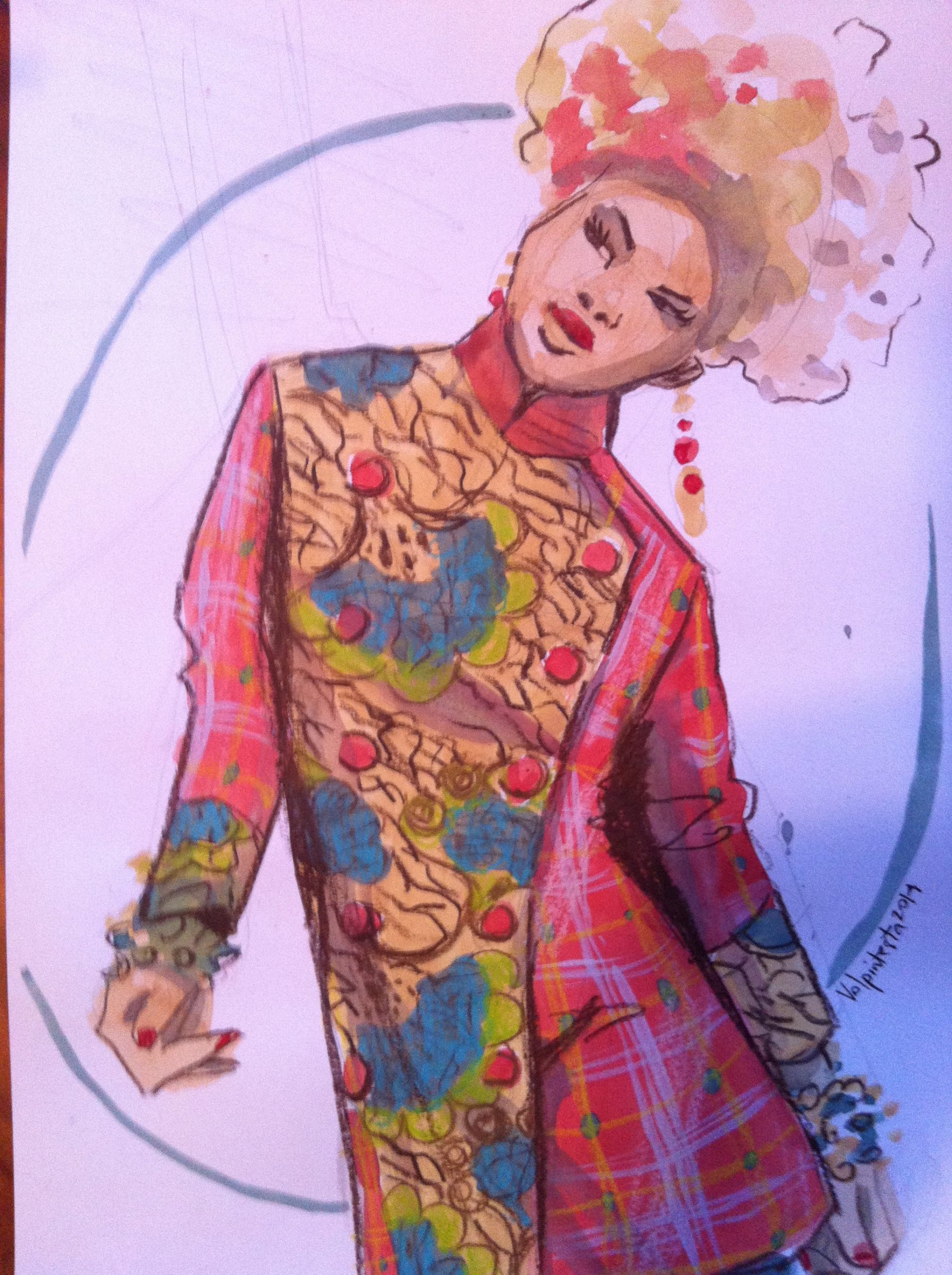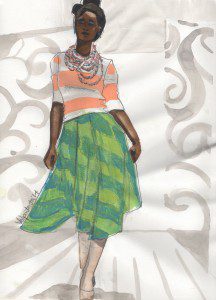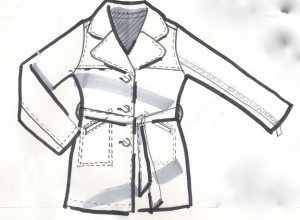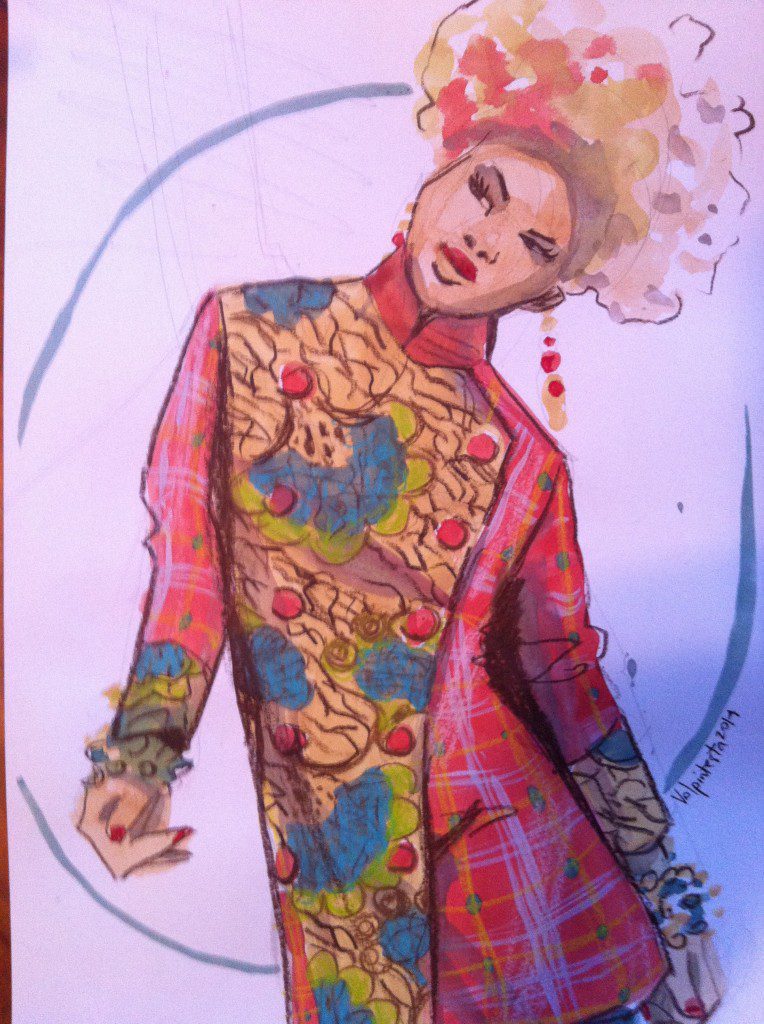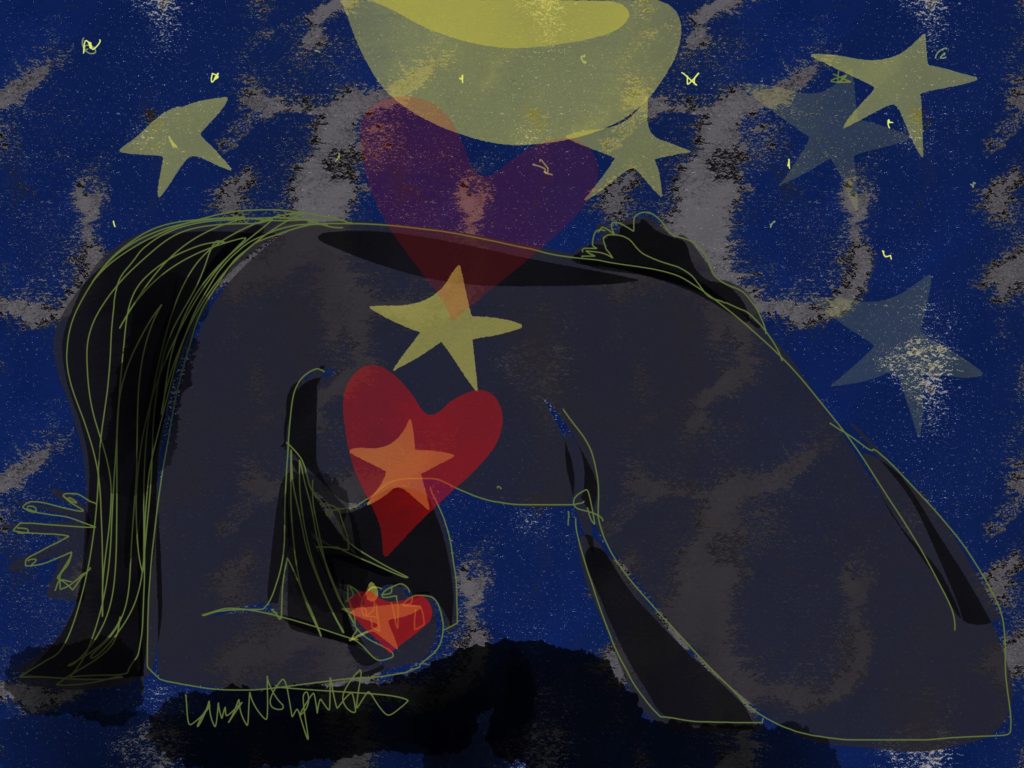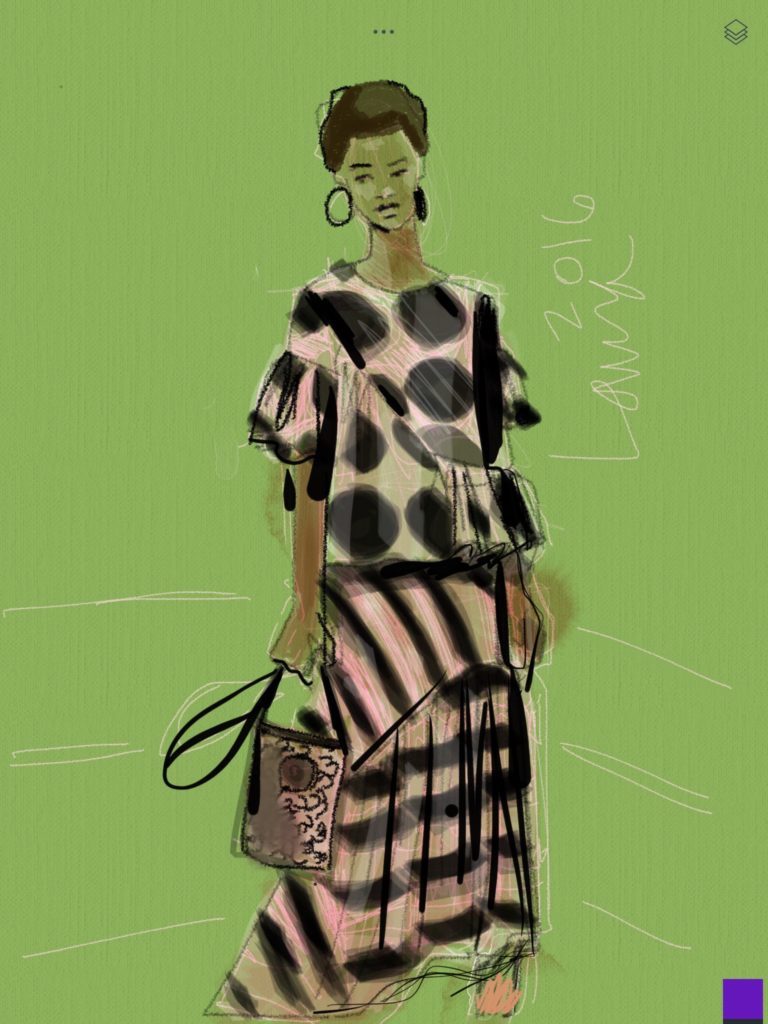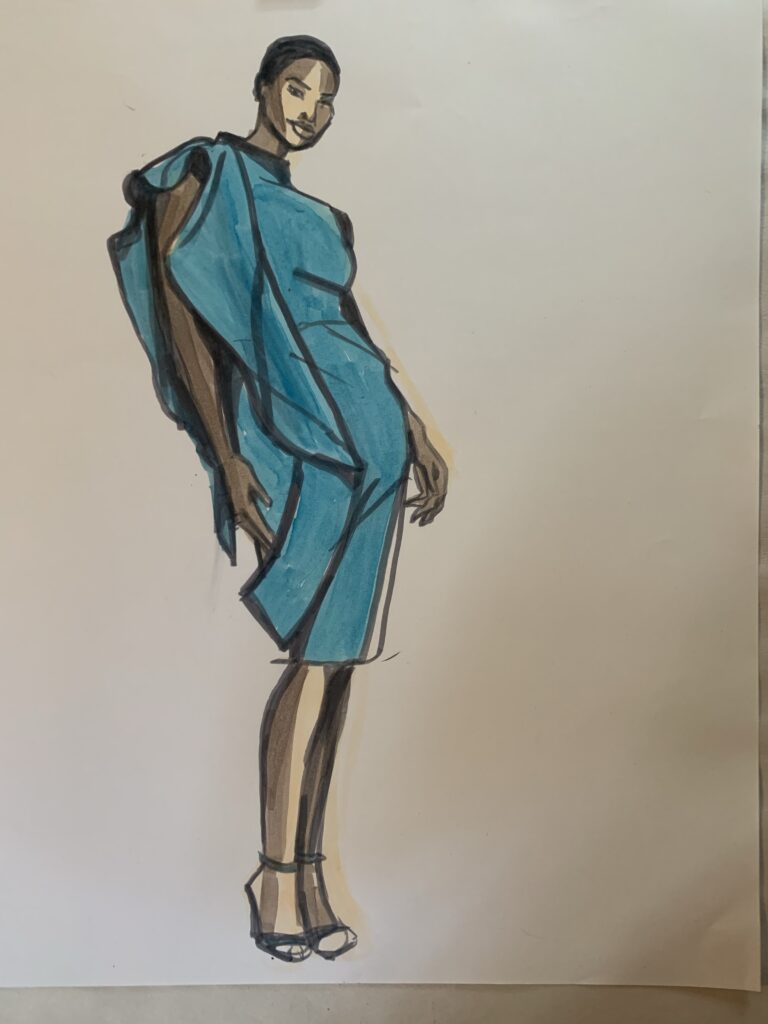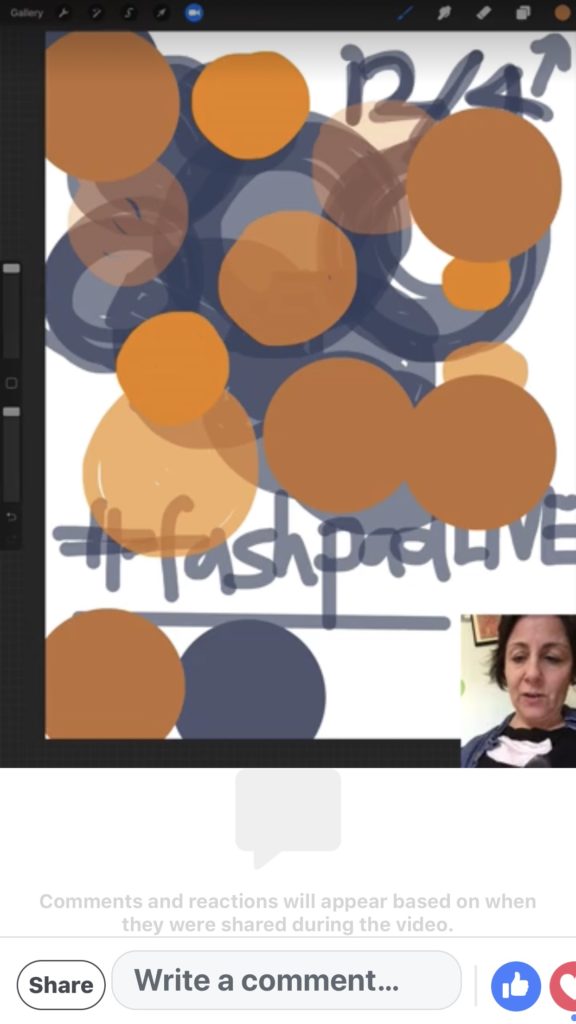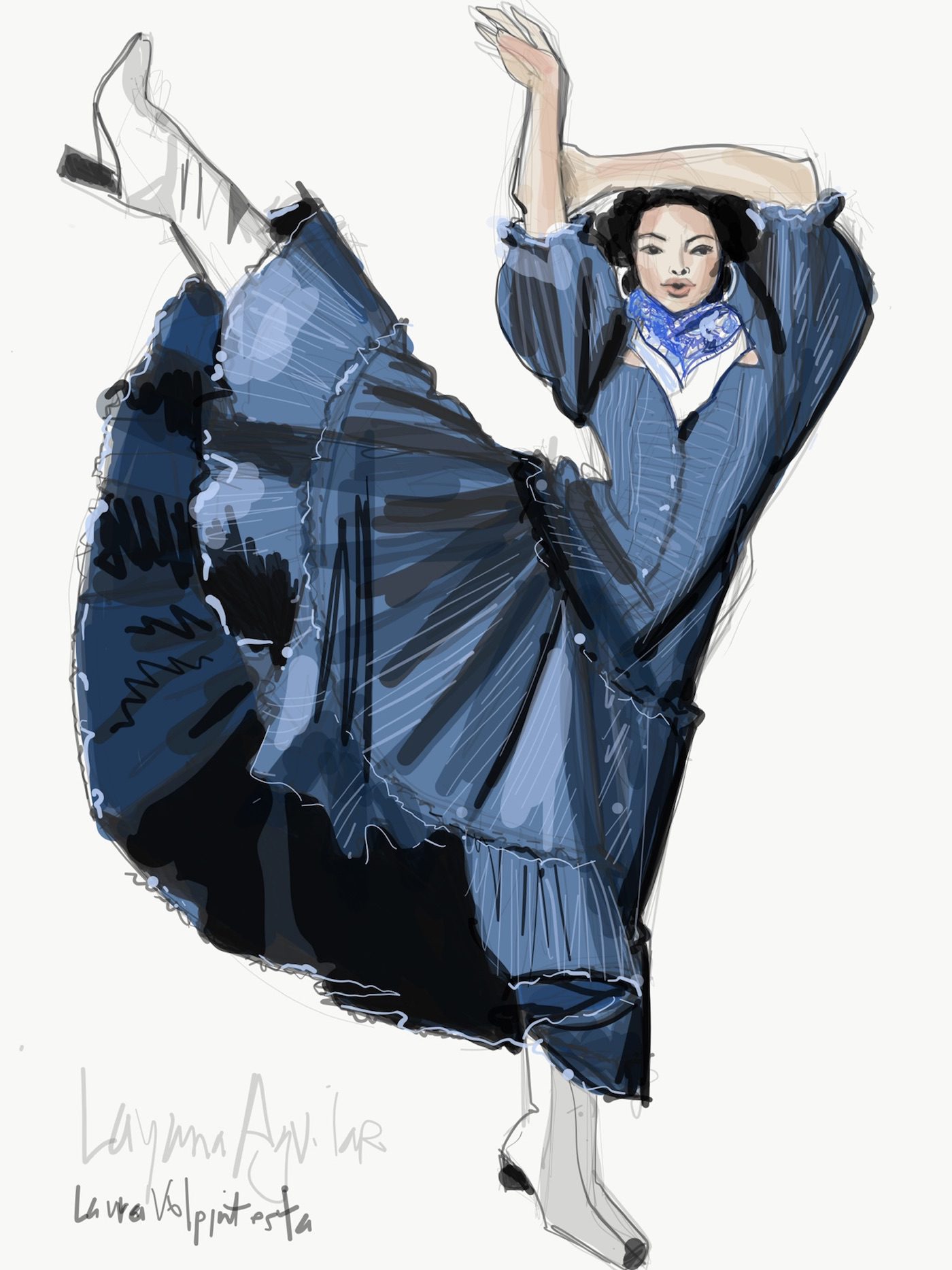How do you breathe more LIFE and MOVEMENT into your fashion illustrations?
Everybody asks “how do I get the stiffness out of my drawings?”.
I’ve got 10 FABULOUS TIPS for you today. Let me know in the comments below if you have any paradigm shifts or fresh results from working through this list!
I’m definitely biased towards lively, moving drawings….. I like it when the models look like they are dancing. That doesn’t mean that everyone has to like a style like that, of course! My fashion illustration and design online programs definitely encourage and support the exploration of energy and vitality in your work, don’t be shy :0)
Because humans are living things, and it’s wonderful if you can bring some of that living, breathing, moving vitality on to your drawing page.
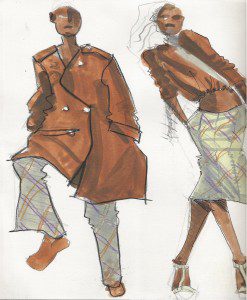
(This post is about figure drawing, but in fact even when I have to draw flats, I STILL see the garment as a living sort of a personality. A garment has an undeniable character and spirit that can be captured in the away you sketch it, for a more interesting presentation and more pleasurable drawing experience, as well).
When I saw my first, live fashion show (the student show at Parsons School of Design while I was applying in 1991) what moved me to tears was that reminder, that realization that fashion design is an art that functions on the living human, moving with them through their life. It just touched me in that way as the ultimate living, breathing art form.
So, memoirs aside, here are some of the major secrets and ways that you can breathe living energy onto any fashion illustration or sketch. I think you’ll like them, because on the whole I find that most students want to get more life and relaxed movement into their sketches, and worried about looking “stiff”. Certainly when presenting your collections, you want the women in them to be thriving, confident, relaxed, happy, or at least one of those adjectives!!!
-
- “STAND UP!” Whenever possible, for maximum energy in your drawing, stand up! Certainly there are jobs that I’ve sketched for hours and hours on end, where this wouldn’t be practical at all, but at least when drawing from a live model or working on a single or small set of illustrations, stand up! It keeps the energy moving through your whole body. Also, it gives you the very valuable advantage of being able to step back and view your page from a distance, which makes it easier to catch errors or view the integrity of the whole drawing rather than get caught up in one tiny portion as can happen when hunching over a desk for hours.
-
- “DRAW WITH YOUR ARM!”. Use your fingers and wrist for fine details, but we tend to overuse them because our culture is so writing based and trapped in the fine motor detail. Drawing is not writing.! Finger and wrist work are best for the final touches. For the overall sketching and layout of the page, use the sweeping movements of your whole arm and involve your whole body in this action!
-
- “WORK THE WHOLE PAGE AT ONCE” We have a tendency to start at the top of the page, and slowly work our way down, detail by detail. It is extremely difficult to be accurate with proportions or to have a flowing energy run through the figure when we work this way. It can lead to the drawing being choppy or broken into portions that don’t seem to connect with each other. Start with a sweeping line from head to foot so that your drawing is a whole shape from the get-go. Then keep yourself moving from working to parts high on the page, to low on the page, alternating up and down.
-
- “KEEP ON MOVING DON”T STOP”: actually try to keep your hand moving the whole time, even those times when you are a bit lost or not sure where to go next….. keep the hand moving. At least try this technique. Remember that the lines can be very light, faint, but that they literally are action, giving a pulse to your figure :0).
-
- “ROCK OUT”: while you work. WHAT MUSIC ARE YOU LISTENING TO??? Headphones, speakers, if you are in purely drawing mode, turn up some tunes that make you feel your own life force and remind you of art and keep your joy on. It can be a huge stress reducer, whether it’s reggae or classical or meditation music, salsa, up to you.
-
- “FIND YOUR ANGLE”: Straight vertical and horizontal lines are considered “stable” visually, Diagonal lines are “active, dynamic”. I find this to be so true. Anywhere that you see a diagonal edge, line, or relationship, play it up with a darker line or shadow, or simply by making sure that the angle is accurate and not understated. Some really common angles can be found in the shoulder line, legs, thighs and calves, hip line, the axis of the head. Look for diagonal and triangular relationships wherever you can find them and capture them.
-
- “SHAPE UP”: See shadows as simple shapes that CROSS THE BODY from left to right, not only as trickling down the edges of limbs and things. *** Common shadows that cross the body are under the chin, across the bust, across the hip when the hip is resting to one side, or under hems.
-
- “BE BALANCED”: Use a plumbline/balance line, drop it from the head straight to the floor and use this PURE VERTICAL REFERENCE LINE as a guide to place the feet. This pure vertical line in the center of your drawing gives you so much control in gauging the location of the legs, ribcage, shoulders, hips, in relation to the pure vertical
-
 “QUALITY CONTROL”: Remember line quality– having a range of lines from light to dark, thin to thick. The darker, thicker lines create depth, so using a variety of lines creates movement in the form of DEPTH, so movement from front to back in space, in addition to lift to right movement, which we’ve done in the other steps. Line quality helps the eye to prioritize, as well. If all of your lines are the same weight, there is a flatness.
“QUALITY CONTROL”: Remember line quality– having a range of lines from light to dark, thin to thick. The darker, thicker lines create depth, so using a variety of lines creates movement in the form of DEPTH, so movement from front to back in space, in addition to lift to right movement, which we’ve done in the other steps. Line quality helps the eye to prioritize, as well. If all of your lines are the same weight, there is a flatness.
-
- “APPRECIATE YOUR DIFFERENCES” Asymmetry or “off balance” shapes will always add energy and interest to an image that would also be static. A symmetrical garment can create asymmetrical shapes in any pose.
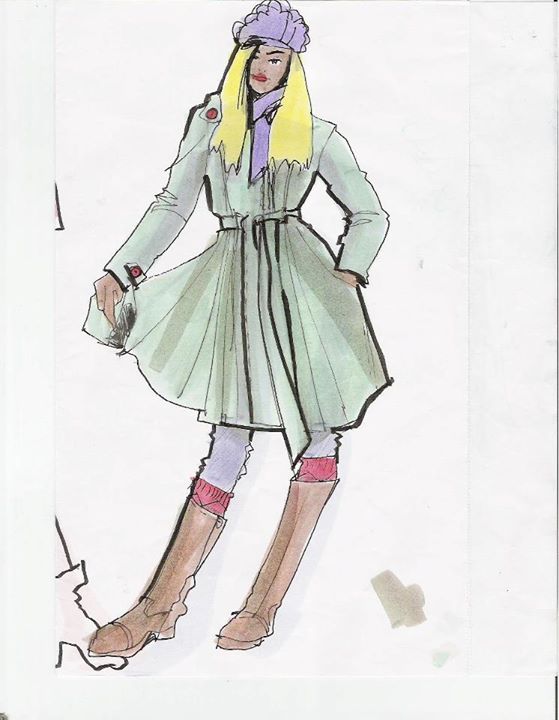
For information about study with me in my online courses, scroll down and see what’s cooking, or visit my courses page.
OR SIGN UP FOR THE PLUMBLINE WORKSHOP! I’d love to see you there and I know you will make some VERY interesting discoveries. there.
Love always,
Laura

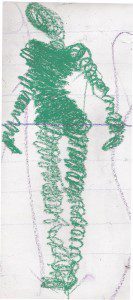
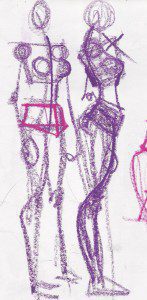
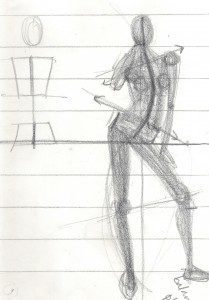
My innovative fashion illustration and model drawing exercises can loosen up and unleash the movement and accuracy of your drawing.

